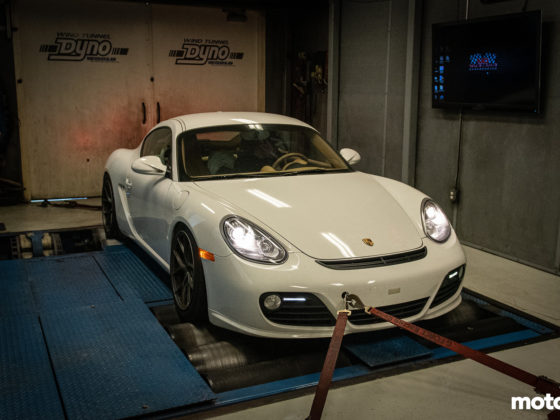To most home mechanics, wiring is pure witchcraft. Voltage, amperage, DC vs AC, resistance, impedance, high vs low side switching, relaying, analog vs digital…all engineers get a crash course in electricity during their schooling, but few actually understand more than the basics of electricity, wiring, and how to diagnose and repair electrical issues. Ask most car builders what their least favorite job on a car is and wiring is almost always in the top 3 of their list. So when smoke started pouring out from under the dashboard of our Project Cappuccino, you can imagine the sinking feeling that immediately followed.
This wiring short, which happened in September of 2018, is why Project Cappuccino has been absent from MotoIQ since we road tripped it across America. Tracing and repairing the short was a daunting task, especially with the short being deep under the dashboard. Initially we intended to take the car to a shop to have the wiring repaired, but when those plans fell through, we took a crash course on wiring and picked up a few tools and supplies to prepare for a deep dive into the nervous system of our little Kei roadster.

The most important tool for this type of job is a factory service manual, specifically one with a full wiring diagram. Fortunately, the fine chaps at SCORE (the Suzuki Cappuccino Owners Register for Enthusiasts) have a Cappuccino service manual available for all members. SCORE is an owner’s club based in the UK and has a huge forum full of Cappuccino owners and their years of experience. More importantly, they have uploaded a Suzuki service manual for owners to use. Best of all, because the Cappuccino was sold new in the UK, the manual is in English! Huzzah! We joined the club, downloaded and printed the entire electrical section of the service manual and got to work on the Cappuccino. While the service manual was useful for diagnosing the short, it was utterly useless in helping us disassemble the interior of the car, so the following steps should help other Cappuccino owners who need to root around the interior of their own cars.








5 comments
Hey, look at that! And you didn’t even need to break out a multimeter or janky test light.
Are those LED dash lights dimmable? Bright cluster lights at night and my astigmatism do not get along.
In the Cappuccino, there is no dimmer for the dash lights. I’m not sure if they are dimmable in other vehicles. But for the Cappuccino the dash lights are so dim to begin with they bring the readability up from “useless” to “regular 90’s car.”
I replaced the cluster lights in my e30 with leds, and they dim perfectly with the standard dimmer.
It really is a great upgrade. And they will practically work forever.
Great read! Must have been so satisfying solving all that mess.